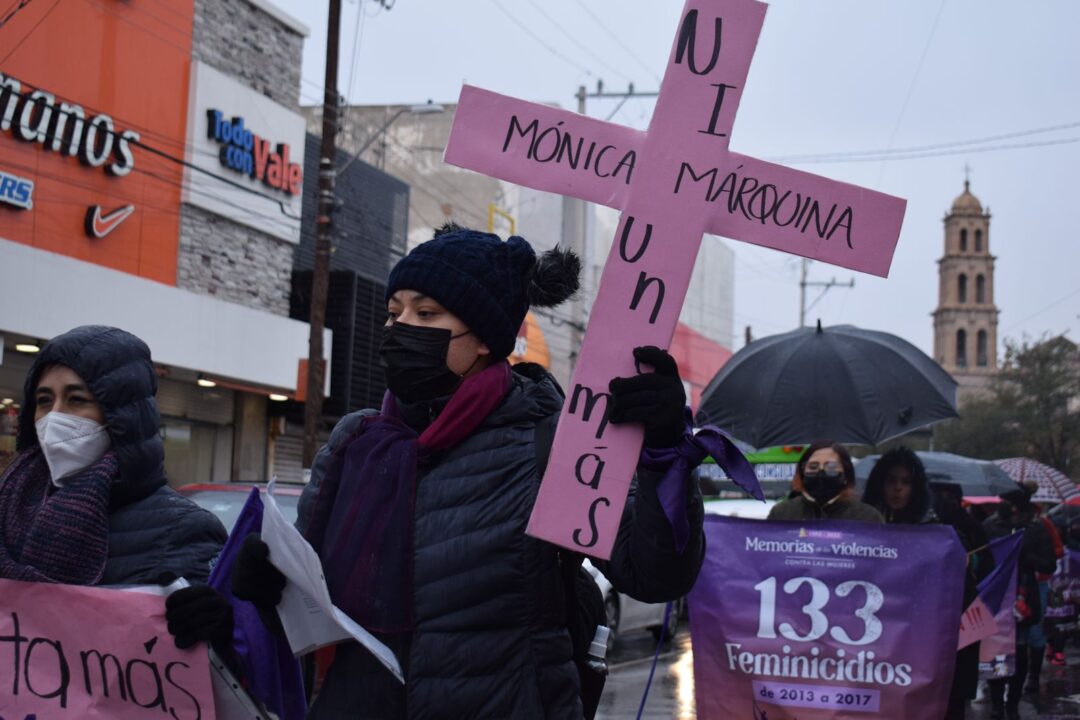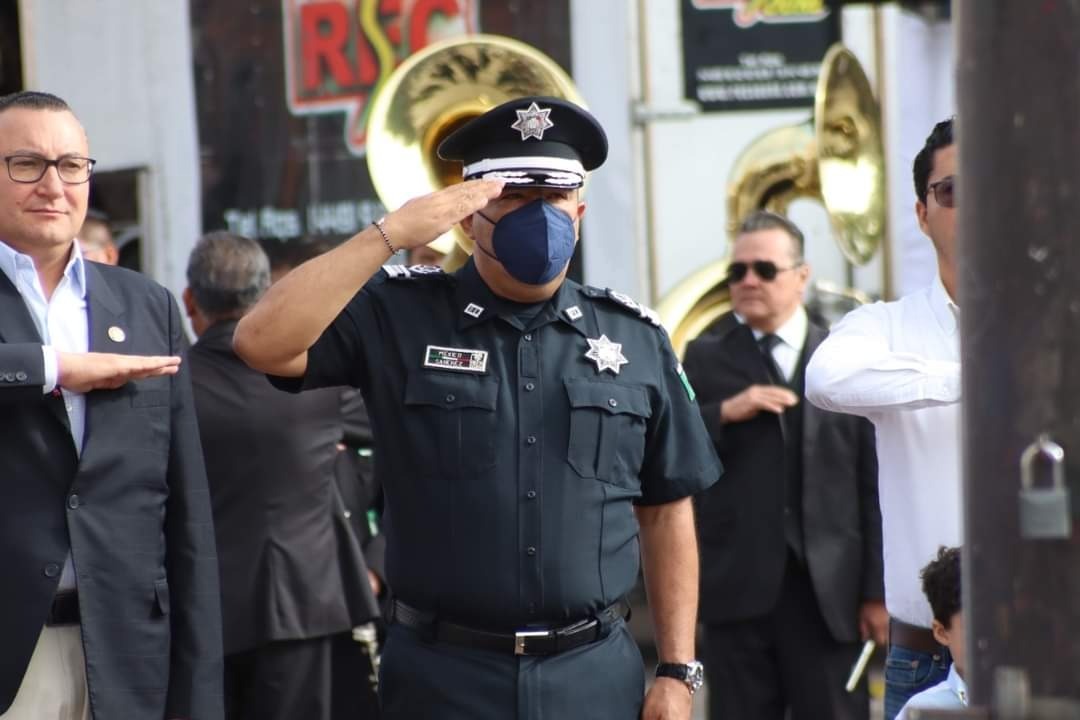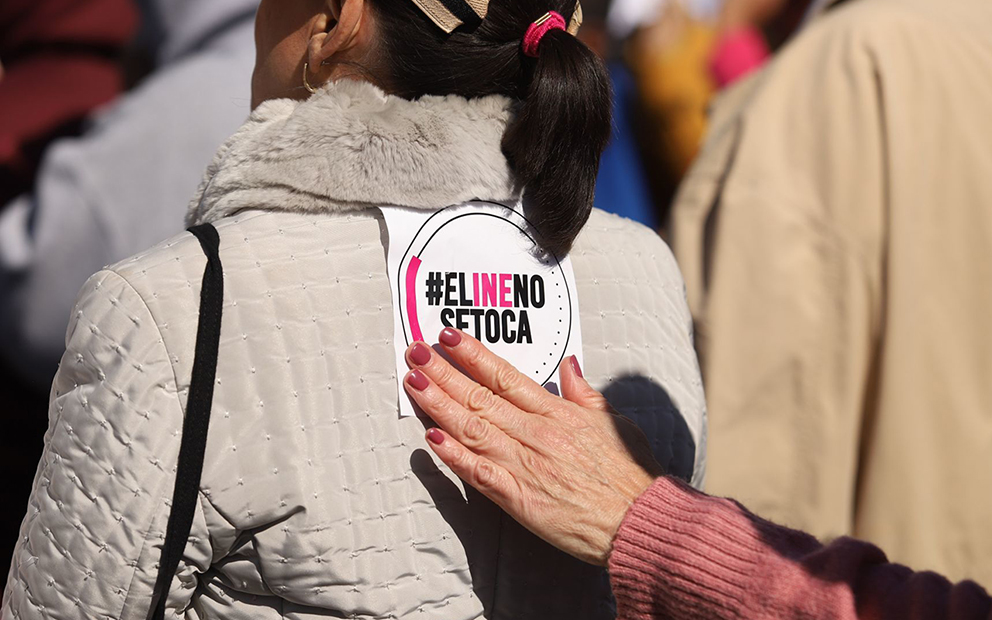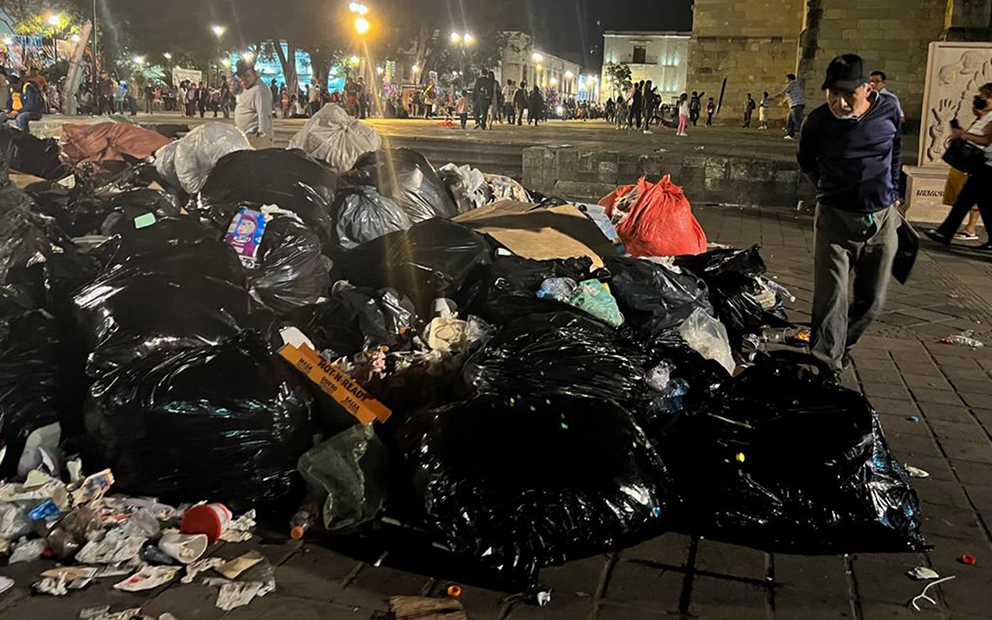23 julio, 2021
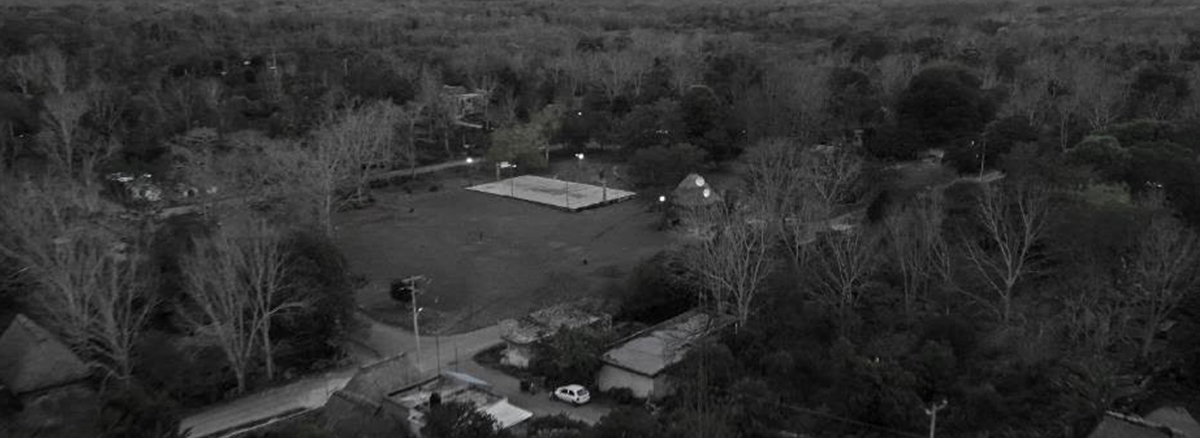
Charcoal is produced year-round in Ejido San Gabriel. It has a Forestry Management Plan that allows it to commercialize approximately 200 tons of charcoal annually. One of the objectives of the project is to eliminate intermediaries and thereby obtain larger profit margins, in while incentivizing an orderly management of the forest
Text by Noé Mendoza, originally published May 10, 2021.
Translation by Noragric.
QUINTANA ROO–Protected by the jungle canopy, crickets and frogs emit a gnawing chorus that at times seems to be the sound of the stars embracing the whole night. But there is a moment in the early hours of the morning when their frenetic singing gently subsides, and you can enjoy the dance of the foliage caressed by the wind. It was during these couple of hours that I sleeplessly paced the streets of the village San Gabriel. Despite my best efforts to walk gently, after a short time it seemed that all the dogs in the village had registered my presence. Furious barking came from all directions. For the distrustful canines, a stranger that prowls at unusual hours near their domains can only be interpreted as a menace.
I was heading to an appointment with a 4 a.m. start, required because of the long round trip involved. The purpose: transporting charcoal to the city of Playa del Carmen. Around 4:15am, the rumble of a Ford F350 lorry managed to drown out the canine cacophony, rudely interrupting what had started as a peaceful early morning in a village in the Mayan rainforest.
The truck was driven by Norberto, the President of the Commissariat of the Ejido [a form of collective land tenure created during post-revolution agrarian reform] and the Director of the cooperative Carboneros del Sureste (CASUR), who greeted me with unusual lethargy. “Won’t Mr. Alberto come?” I asked him. He said Alberto was busy, but Aureliano would be be coming instead.
Shortly after, Aureliano approaches the lorry with a similar countenance to Norberto’s – that of a sleep deprived man with an empty stomach.
With reluctant haste, Norberto and Aureliano cleared out the truck bed until only a heavy, dusty tarp and a set of thick and splintered ropes remained. The three of us climbed inside the front cabin. I sat in the middle. At 04:30 a.m., the truck began to roll. We left for the Chacte’ob Ejido, where we would pick up our cargo.
Charcoal is produced year-round in San Gabriel, but that week the charcoal warehouse was almost empty. Ejido San Gabriel has a Forestry Management Plan that allows it to commercialize approximately 200 tons of charcoal annually, and CASUR is part of a peasant-lead commercialization mechanism through which they can sell their products directly to hotels and restaurants on the touristic Mayan Riviera. The commercialization platform has a warehouse in Playa del Carmen, which they co-manage with other rural organizations and civil society entities. One of the objectives of the project is to eliminate intermediaries and thereby obtain larger profit margins in parallel to incentivizing an orderly management of the forest.
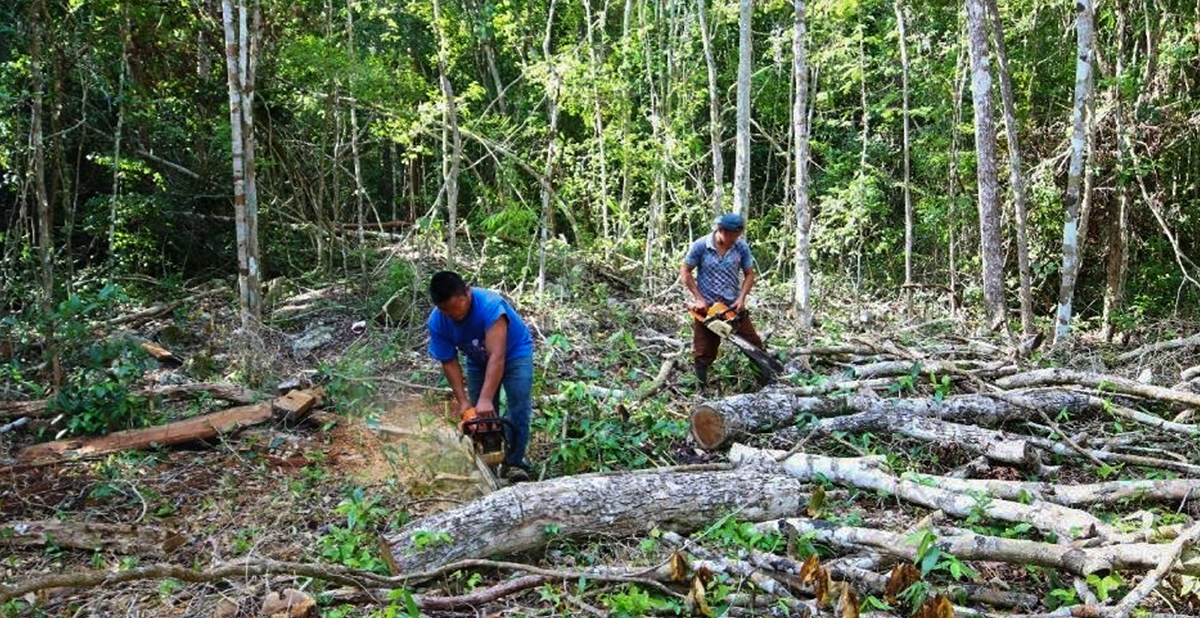
Whilst the cooperative’s marketing channel has promise, it also poses challenges for the members of CASUR. Its clients –hotels and restaurants– demand small quantities of the product delivered on a weekly basis, unlike the old intermediaries who bought it by the trailer, picking up the charcoal in the village themselves when the Ejido had enough product in its warehouse. Since its creation in 2015, CASUR’s commercialization project has achieved some of its objectives, but in recent months, the cooperative found it difficult to collect enough charcoal. In the village, other families became eager to collect and sell charcoal, supported by the former intermediaries, who were upset by the cooperative’s aspiration to sell directly to hotels and restaurants. To reduce the friction and disagreement among its members, the Ejidal assembly agreed to divide the total authorized charcoal production between every Ejido member so that each person could sell to whoever they chose, to the cooperative or to the former middlemen.
The previous arrangement in the San Gabriel Ejido granted CASUR the exclusive use of the authorized amount of charcoal, to strengthen the position of charcoal producers in the market. With the recent change in rules due to internal competition, the cooperative is unsure how much charcoal they can produce and collect each week. This situation has hindered its capacity to meet the goal of regularly supplying its clients in the Mayan Riviera with charcoal.
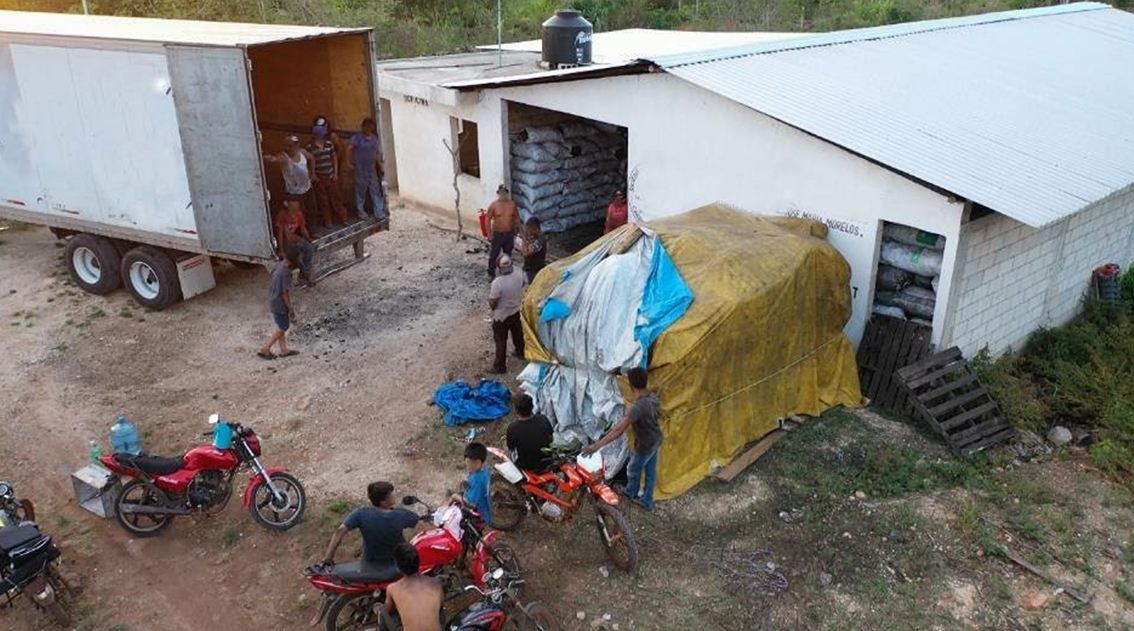
Together with external allies, CASUR determined that it should buy charcoal from other Ejidos who have legal permits to produce and transport it. With these agreements, CASUR can maintain a constant supply to its customers whenever there is not enough charcoal in San Gabriel due to internal competition in the village. CASUR forged an alliance with Ejido Chacte’ob, which provides quantities that CASUR could not produce. The alliance implied that CASUR would be in charge of loading the charcoal in Chacte’ob and would take it to the warehouse in Playa del Carmen.
At 5:15am, we stopped for breakfast at the municipal food market of José María Morelos. After a eating couple of tortillas filled with pork, Norberto and Aureliano regained their vitality and exchanged some phrases in Mayan over ice-cold Cokes. I ordered a papaya juice. As we resumed our journey, I tried to engage Norberto in a conversation.
“It’s a shame that the wood that is cut down in the milpa (subsistance based agriculture system based on corn, beans and squash) just sits there, and that you can’t legally produce charcoal with it, don’t you think?” I asked Norberto.
“Yeah. In the Milpa a lot of wood ends up lying there. If it is not transformed into charcoal, most of it rots. People are looking for high forest to cut because corn grows better there – but when you cut tall trees, not all the wood will burn. The wood that does not burn is what people use for charcoal,” Norberto explained.
In San Gabriel, CASUR enforces compliance with the forestry law by persuading charcoal producers to restrict their activity to the areas authorized for forestry management by the Secretariat of Environment and Natural Resources. Nevertheless, many Ejido members have fought for permission to produce charcoal with wood obtained at their milpas, outside the area of forestry management. To grow Milpas – the traditional technique used in corn, beans and squash crops – it is common to slash and burn patches of forest to prepare the soil for sowing. In San Gabriel, it is common practice to reserve a quarter of the wood that remains on the ground after cutting, to make charcoal in situ. This practice is not compliang with Mexican environmental legislation, which states that wood can only be extracted or transformed in fixed areas authorized by the Secretariat of Environment and Natural Resources. The law does not consider milpa system a valid forest management technique.
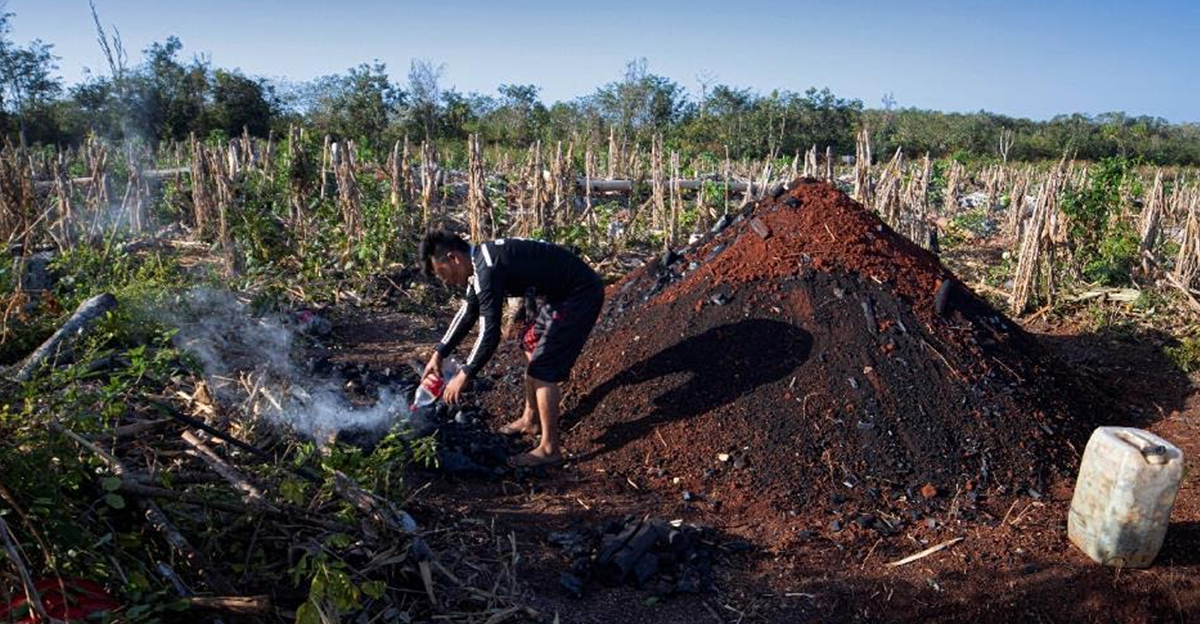
We drove towards the south east. This dry season was preceded by almost zero rainfall the previous winter. The low forest already looked defeated by the lack of water and the leafless branches pointed at the sky, imploring for summer rains. As we turned to the east almost imperceptibly, we left behind the landscapes of short vegetation that characterize the northern and central Yucatán Peninsula. The foliage became greener and more elevated as we penetrated the evergreen rainforests that foretell the proximity of Caribbean beaches. Our view of the road became momentarily blurred by the strips of fog that ran across the windshield like transparent fingers. Despite the low visibility, Norberto drove smoothly, managing to avoid the cracks in the ground that became more frequent, threatening to devour our well worn but brave tires at every turn. Meanwhile, Aureliano took a nap.
Before reaching Chacte’ob, we crossed two towns. We passed school children in their neat school uniforms and young women waiting for public transport. Groups of men gathered separately on their small motorbikes. A few minutes down the road, this scene was replaced by small motorized congregations of youngsters equipped with tarnished chainsaws and ragged backpacks.
“The wood brings them into action here”, said Norberto, referring to the youngsters from Ejido Chacte’ob who were beginning their working day.
Chacte’ob is one of the largest Ejidos in Quintana Roo, at more than 400 square kilometers. Here, communitarian forestry is an essential economic activity that provides sustenance to a large portion of approximately 1,000 residents. Its dense evergreen forests not only protect a blazing universe of tropical birds and endangered mammals, are also home to a wide variety of tree species of high commercial value. The multi-layered canopy that protects the terrestrial fauna from the relentless sun is sustained by hundreds of tree species that the youngsters of Chacte’ob selectively cut for sale in the market. Other activities linked with the forested landscape, such as ecotourism projects, beekeeping and charcoal production, complement the income of the Chacte’oban families.
Itching to load the charcoal, Norberto parked the truck in the area surrounding the main square of the town. His haste was justified – our journey would not take us back to San Gabriel before dusk unless all the manoeuvres were executed with utmost efficiency.
The person in charge of coordinating the delivery of charcoal in Chacte’ob was not at home, we were told. We had no choice but to wait.
After 20 minutes, a dilapidated Toyota Tsuru parked next to us. It was driven by Mariano, member of the board of directors of the Ejido and the man in charge of the charcoal. He greeted us with contagious enthusiasm. He explained that he had been “supervising work inside the forest,” that he did not have the permits ready, and that he still needed to find the keys of the Ejido office and fill out the documents. More waiting.
Mariano left, then returned accompanied by two young men. Now with diminished fervour, he explained that the Ejido had run out of permits. As an alternative, it was possible to ask the neighbouring Ejido Doroteo Arango for help. Norberto and I got in the Tsuru while Aureliano and Mariano’s two companions began loading the sacks of charcoal into the truck.
“Can we get a permit from the Doroteo Arango people?” I asked. “Don’t worry, Mister – it won’t take long,” answered Mariano. The town of Doroteo Arango lies beside a heavily transited federal motorway, but had an ambience of quietness in its streets that contrasted to the hectic morning activity that we witnessed at sunrise in Chacte’ob. After a brief search, we found the man in charge of the forestry permits. Mariano explained in succinct terms what our mission entailed. Without much hesitation, the man nodded, got on his motorbike and came back half an hour later with a folder packed with green sheets. He delivered the desired document to Norberto, who proceeded to diligently read the permit.
“This demands patience…” I said to Norberto, as he finished filling in the permit. “That’s right – and we haven’t even started yet,” said Norberto calmly as the clock hit 9:30.
Back in Chacte’ob, the refreshing humidity of the early morning had been substituted by intense, cloudless heat. Aureliano sheltered himself under the gentle shade of a Ramón tree (Brosimum alicastrum) that was approximately 20 meters high. His face and arms were covered by a fine layer of black particles, as were the faces of the two young men that Mariano brought to load the charcoal. 160 sacks of charcoal were carefully stacked onto the truck. A couple of empty Coke bottles rolled next to their feet. A reward for getting the job done.
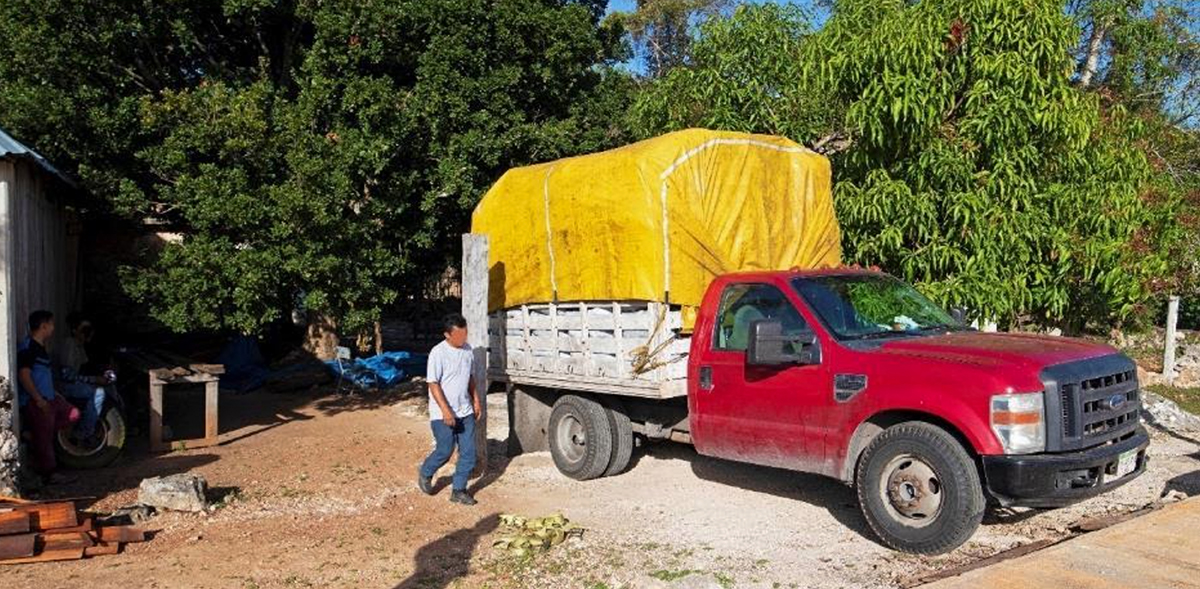
We left Chacte’ob for the northeast, wanting to make up lost time. The series of obstacles we had already faced made me think about the controversial infrastructure project, the Mayan Train. The project is promoted with vehemence by the Mexican Federal government. It’s depicted as the key transformation that will unleash development in an ‘abandoned region,’ as President Andrés Manuel López Obrador refers to the Yucatán Peninsula’s rural areas. The Mexican government claims that the train will exponentially increase the flux of tourists in rural areas beyond the touristic cities of the Mexican Caribbean. The train stations will be accompanied by ambitious urbanization projects that intend to attract large private investments in tourism and agro-industries in impoverished areas of the Peninsula.
The development promises of the Mayan Train have been challenged by multiple activists, academics and Indigenous organizations. They fear the train and the urbanization project will oversee environmental regulations, and open the door to extractive industries whose effects have largely proven to be detrimental to the environment and local populations in other parts of the world. Aureliano is critical of the train. He has actively participated in workshops led by the Assembly of Territory Defenders Much Xiin Baal, where Indigenous leaders disseminate critical reflections about the Mayan Train and Mayan culture with communities that will be affected by the mega-project.
“It is a project that will benefit big companies who are looking for new territories. It won’t benefit us,” reflects Aureliano. Norberto has a more nuanced view, but is still sceptical. “The government plans sound OK, but you can never tell what will really happen”.
As I saw in CASUR’s income statements, transportation and logistics are their most significant cost. A railway network connecting the rural areas with the dynamic markets of the Mexican Caribbean could be a convenient, cost-shrinking tool for communitarian initiatives like CASUR, which are trying to improve their position in value chains. It could also, however, reinforce the former intermediary’s strength, if the latter are the ones who use the train to enhance their businesses.
We slowly traversed the lonely country roads of the Mayan rainforest, the recurrent dips on the road keeping us alert. At around 10:30, we merged onto federal road 307, which connects the touristic destinations of the Mayan Riviera. We passed the city of Felipe Carrillo Puerto, the spiritual and organizational center of Mayan rebels at war with the Yucatecan elites settled in Mérida during the second half of the 19th century. Today, the city marks the start of the most dangerous section of road. Towards the north, a track of 60 miles separates Felipe Carrillo Puerto from Tulum. Accidents, kidnappings and robbery have occurred with increasing frequency here in the last five years.
In the State of Quintana Roo, the violence associated with drug cartels pulses from the north-eastern tip to the rest of the Peninsula, with Cancún as its point of origin. While the zone between Carrillo Puerto and Tulum is the most recent frontier of criminal violence,, these risks were not the ones that distressed Norberto and Aureliano. Their worries were triggered by the imminent encounter with the Federal Police –recently transformed into National Guard. Weeks before our trip, Norberto told me about these incidents:
“Almost always, they tell us that the charcoal should have a sales invoice. I tell them, ‘no, Boss, because this charcoal goes to thewarehouse of the same cooperative. The permit should be enough.’”
Usually, the police take the permit and, contravening the correct legal procedure, they say:
“Follow me folks, we will meet on the next bridge,” forcing Norberto to truck the lorry with charcoal for which he can no longer legally account for if the military or police pulls them over again.
Norberto recounts that on one occasion, the Federal Police pulled them over in Carrillo, and then again before reaching Playa del Carmen. “I told the second one ‘hey boss, we already offered our share to the policemen of Carrillo.’ He answered: ‘It doesn’t matter! Those were state troopers, here we are something different.’ It is part of the game. What can we do about it?”
Aureliano also has plenty of anecdotes about these encounters. “They tell us: ‘instead of moving your charcoal from the village to the city, you should simply sell it in your Ejido and emit an invoice. Why are you complicating your life?’ There is no way to win over them. They have suggested we go and talk to the regional manager to reach an agreement. People say that all the major transport companies go through them to avoid problems. I don’t know, that sounds expensive.”
For each journey to Playa del Carmen, CASUR budgets around $500 Mexican pesos for bribing Federal Police.
Aureliano recalls: “The first time they pulled us over we offered a $200 bill. We had no more. ‘Don’t fuck with me,’ the policeman told me.”
“They always find something,” Noberto adds. “It can be the insurance, the invoice, or having old tires. We know these are only pretexts. Even if we had everything in place they would ask for money.”
A quarter of an hour later, after passing Carrillo Puerto, my sleepiness was interrupted when Norberto stopped on a parking shoulder in front of a patrol vehicle of the Federal Police.
“Are they pulling us over?” I asked. “Yep. I’ll be right back,” answered Norberto, while he grabbed a folder and put some bills in his shirt pocket.
Norberto chatted with two uniformed agents. Their verbal exchange projected an air of cordiality, at least from the perspective offered by the side mirror. Aureliano got out of the car to make a phone call. I followed him to stretch my legs and get a bit closer to the agents of the National Guard. I stood a couple of metres away from Norberto and smiled, sunglasses on.
“It was about time to stretch my legs!” I said with a friendly tone. The policemen looked at me for a couple of seconds without any major reaction. They stopped their chat. One of them said, “Alright. Wait for me in your vehicle. We will check this out.”
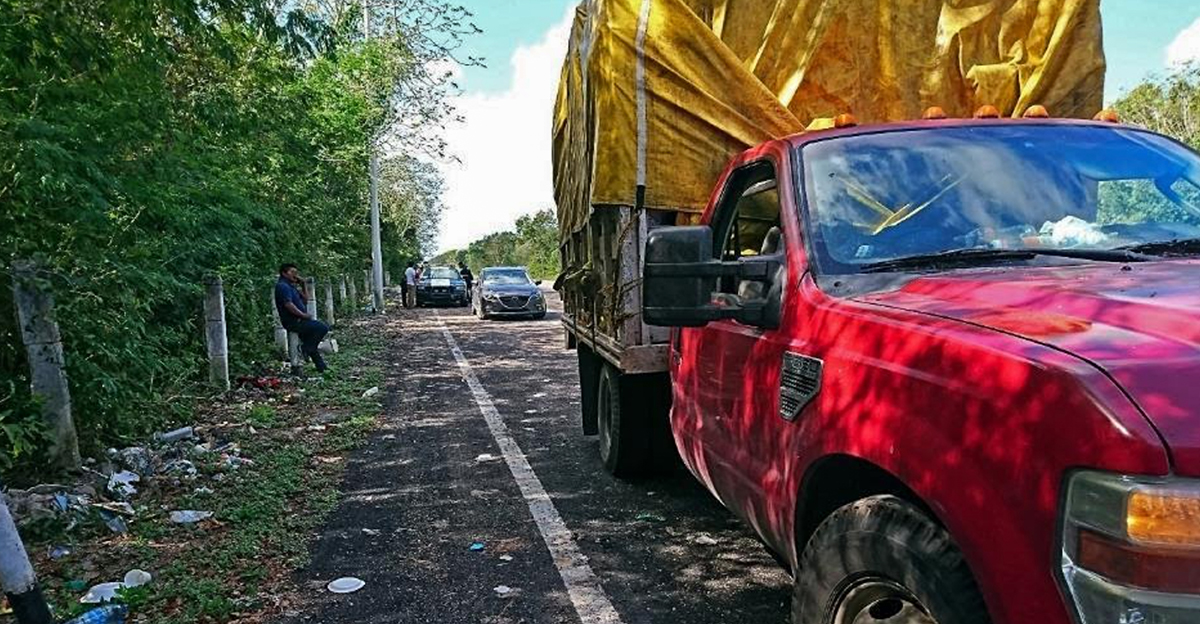
We all went back inside the truck. After a quarter of an hour, one of the policemen made a hand gesture to Norberto through the side mirror. The driver got out immediately and came back in less than a minute.
“It’s done. I had to give them $800 pesos. They said it was because our suspension was crooked, that we exceeded 100 km/hour when the limit for load trucks is 80, and because we are carrying more than 3.5 tonnes. They always find something. The fine would have been around $6,000 mxn, they said”.
Indeed, the lorry has an authorized load capacity of 3.5 tonnes and in Chacte’ob we loaded almost four tonnes. About the speed, it was hard to tell because our speedometer didn’t work, but I doubt that we were close to 100 km/hr with the 160 sacks on board. Acknowledging the meagre profit margins and the huge scalability challenges that CASUR’s business model faces, I wondered whether it would be economically viable to keep up with all the legal and technical components needed to avoid extorsions and fines on Mexican motorways. I thought again about how convenient it would be to move larger volumes of charcoal by train. Luckily, we did not come across any other patrol cars ahead.
A little later, we had lunch in the next city: Tulum. This time, instead of eating in a traditional food market –places rarely found in the young cities of the Mayan Riviera– we entered a small restaurant next to the motorway. Our jeans and shirts, stained with black spots, stood out against the bright colours and light beach clothing worn by the other customers. I noted that Norberto and Aureliano were struggling, uneasily turning the pages of a menu that offered a wide variety of dishes in contrast to the pork tacos on offer at the food market in José María Morelos. I recommended some options, but when the waiter came over, they simply said, “The same as him. And a Coke.”
We hit the road again. After Tulum, the road shifted from being a two lane semi-highway to a full highway with four or five lanes. The flux of vehicles became denser and more frenetic as we approached Playa del Carmen. The transit is composed of trucks of all sizes, vans packed with tourists and private cars with one or two passengers, all in a hurry. Heading north, the road is no longer flanked by tall trees, but by majestic entrances of all-inclusive hotels displaying English names evocative of sun and beach paradise scenes. The vast gardens and monumental signs of the hotel corporations stand with pride between the road and the highly valuable Caribbean sands. Passing the hotel area, the hasty drivers seem to disregard the hotel workers running with reckless hurry across the motorway to reach the public transport on the other side of the road. The cooks and maintenance personnel standing at the roofless bus stops seem dislocated from the grandiose hotel entrances.
We arrived at the warehouse in Playa del Carmen at 14:00. The staff there told me they recently moved to a new location because the former warehouse was smaller, and its neighbourhood had registered a frightening increase in robberies of businesses and households.
“But the situation here is dire too. Last week a guy was shot to death on this street”. The staff showed me a newly installed security camera system that they bought after the store next door was robbed. Since drug related violence exploded in the Mayan Riviera, the locals dubbed this city as Playa del Crimen (crime beach).
“Are you still selling as much charcoal as before? Hasn’t COVID hit the city yet?” I asked them. “It seems that orders are slowly going down, but we are still delivering a lot of charcoal,” the chief of staff replied.
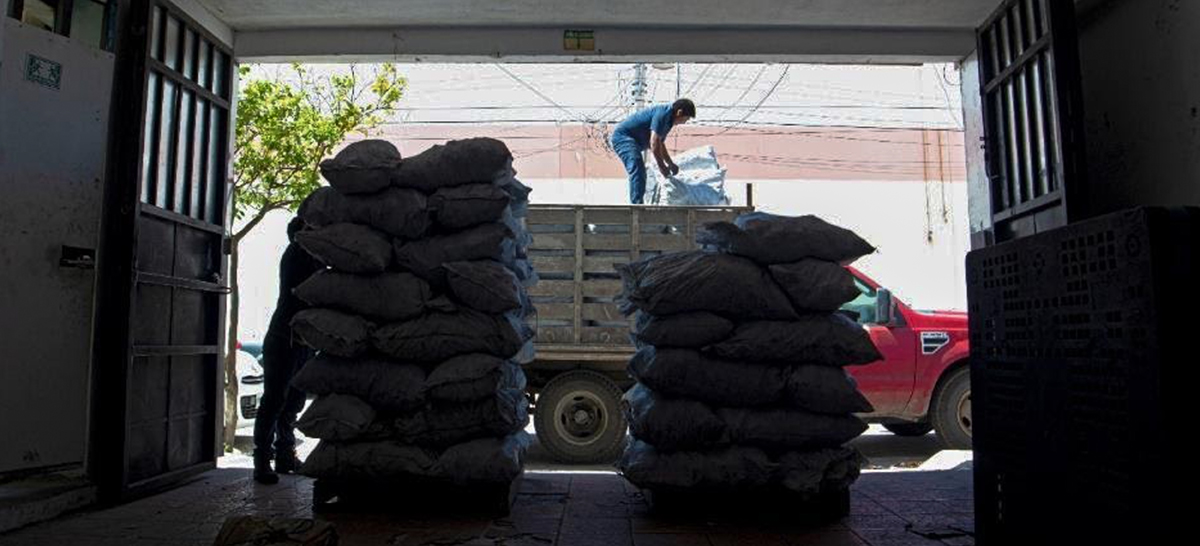
In less than an hour, Norberto, Aureliano, and the staff discharged the truck and filled in administrative forms. When the clock hit 15:00, we were back on the road. At least now our vehicle didn’t tilt.
The journey back home was without interruption. There were no encounters with the police – they never happen on the return trip. We stopped only once to get refreshments. In the rural areas of the Yucatán Peninsula, buying something to drink is a synonym of buying a Coke or related sugared alternatives. In the small shops of villages and towns, sometimes it is hard to find bottled water. The journey was much shorter since we didn’t deviate to Chacte’ob.
After passing Tulum, we left the federal motorway and re-joined the country roads right around the time when the sun stops irradiating heat and the fresh winds from the north descend upon the forest. In the first town we crossed, I observed a modern bus stamped with the flashy logos of a big hotel. From it emerged workers carrying small suitcases. They wore tidy white uniforms with golden letterheads attached to their shirts. I imagined these people going home, taking off their uniforms, putting on shorts and light shirts and maybe watching television whilst swinging on their hammocks. Maybe the next day they’ll join a family member in the milpa, and through these actions they’ll reintegrate into the Mayan lifestyle– which seems like a distant universe here next to the tourist corridor. The modern hotel bus looked alien rolling along the streets of this town. Our creaky truck went unnoticed, blending with ease into the rural scenery. It was the sensation of being home again.
By 5 pm I was already exhausted, and my buttocks were seriously numb. Norberto, on the other hand, looked energized and in a rush to reach the town Tihosuco. He hoped to buy construction material there before the sun went down.
“Mr. Alberto asked me to get some sand. That’s a good way to avoid coming back with an empty trunk.” Norberto explained. I could only observe with astonishment how Aureliano and Norberto shovelled a significant number of kilos of sand at a fast pace. To my benefit, there were only two shovels available.
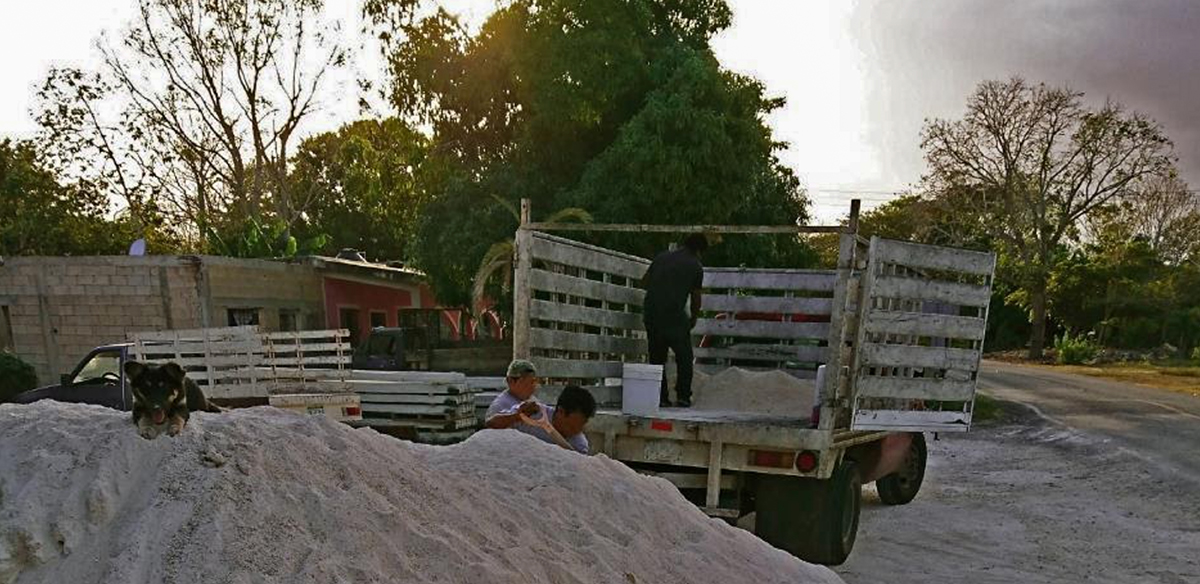
An hour later we were back in San Gabriel, with no sun on the horizon, but still a dim blue sky. That is the precise moment when mosquitoes are out to feast.
“We’ve been at this for 14 hours!” I exclaimed when I saw my watch as we entered San Gabriel.
“That’s how it is. A long trip”, replied Norberto, now with visible signs of exhaustion in his eyes.
I said goodbye to my travel companions in the main square of the village where people always hang out, be it under the protection of an old palm-leaf roof or in the soccer courtyard next to it. This evening, the neighbouring village of San Jorge joined a friendly soccer match against the San Gabriel team. A couple of lamps hanging loose from four meter high poles allow us to see the ball and the players. Seated in a dispersed pattern at the sides of the courtyard, a dozen youngsters followed the match, their attention and jokes alternating between their cell phones and the players. Aureliano joined the spectators and Norberto went home.
I have seen most of these young people actively participating in the production of charcoal, in the Milpas and in the Ejido assemblies. Some of them have shared with me their past experiences as low skilled workers in Playa del Carmen and Cancun. Most of them came back to San Gabriel when charcoal became a prominent activity and decided to establish themselves permanently in the village. Even though charcoal and milpa offer a comparatively lower income than the salaries of the city, it seems to be good enough to access what they say is a good life in an environment that offers them less dangers than urban life.
The current preference on the part of San Gabriel;s youngsters to make a living in their village seems so different to what I heard in the consultations on the Mayan Train. There, Ejido leaders of the Yucatán Peninsula claimed that they would support government plans to build the train and establish new urban centres if new jobs will benefit their youth. Critics of the Mayan Train warn that the jobs created by the construction of the train and the touristic and agro-industrial investments will be precarious and hyper concentrated in the new urban areas. It seems uncertain whether the rural lifestyle of the Mayans will be strengthened by a virtuous interaction with market forces, or if their Indigenous culture will be further marginalized.
The youth of San Gabriel dress and speak in different ways from their parents. They listen to different types of music and project different values, but they share with the previous generation the quality of being an Other, an outside group, which is at the same time linked with the political and financial forces that pulse with increasing vigour from the touristic cities of the Mayan Riviera. As I talk to them and they invite me to enjoy the match with another Coke, I wonder what their situation will be in the following years.
_____________________
To protect the identity of the people interviewed, the names of some places, all of the people and organizations that appear in this article were modified.Faces of villagers in the images have been blurred.
_____________________
Noé Mendoza is a PhD Fellow at the Department of International Environment and Development Studies (Noragric) of the Norwegian University of Life Sciences. His research seeks to understand the relationship between economic inequality and environmental change, focusing on a case-study in the Mayan Rainforest.
First English translation version published by: https://blogg.nmbu.no/noragric/2021/06/30/long-read-a-mayan-quest-into-market-economy/
Click here to sign up for Pie de Página’s bi-weekly English newsletter.
Portal periodístico independiente, conformado por una red de periodistas nacionales e internacionales expertos en temas sociales y de derechos humanos.
Ayúdanos a sostener un periodismo ético y responsable, que sirva para construir mejores sociedades. Patrocina una historia y forma parte de nuestra comunidad.
Dona


